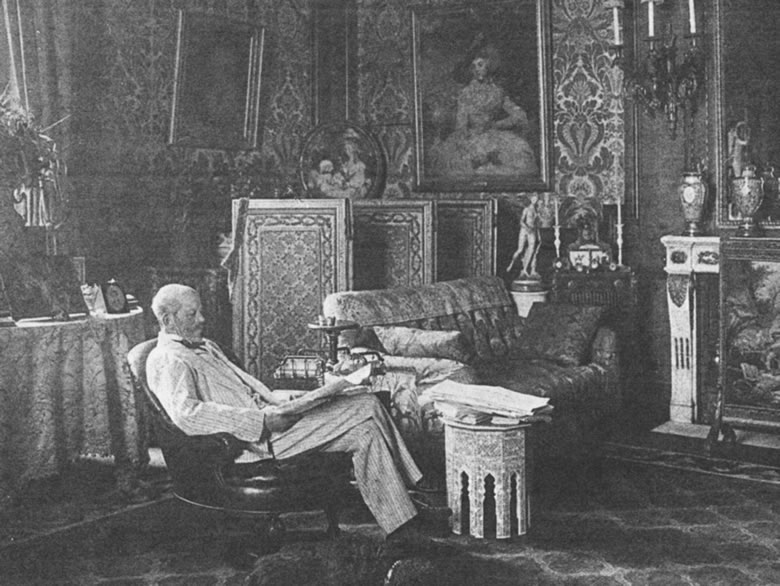Dalva Brothers Antiques, Antique Furniture, New YorkFrench 18th century furniture, clocks, lighting, paintings, porcelain, sculpture and tapestries |
| The miniature white marble figure of Diana the Huntress, (Diane chasseresse) by Jean-Antoine Houdon signed “Houdon F : 1786”. The naked goddess is running forward through rushes, poised on her left foot with her right foot raised behind her. She extends her right hand and holds a bow in her left. She is crowned with a crescent moon held by a ribbon.[Repaired right hand, right foot and bow.] Ex Collection: D'Ormesson (Louis-François de Paule Lefèvre d'Ormesson de Noyseau) Literature: La Vie et L’Oeuvre de Houdon: Georges Giacometti; A. Camoin; Paris, 1929. Pages 225-246. (A discussion of the various versions of Diana known at the time, and the “lost” miniature marble.) Page 306. Houdon: Louis Réau; F. de Nobèle, Paris, 1964. Vol. I, pages 45-46. Page 99. Houdon: Diane chasseresse: Guilhem Scherf; Collection Solo, Musée du Louvre, Paris, 2000. Pages 29-30. Ill. 26, 27, 28, 30. Waddesdon Manor : Michael Hall: Harry Abrams; New York, 2002. Illustrated page 105, from a photograph taken in the Baron’s Room for The Red Book,1897. Jean-Antoine Houdon + Sculptor of the Enlightenment: Anne L. Poulet; University of Chicago Press, 2003. Page 214. Jefferson’s America & Napoleon’s France: Gail Feigenbaum; New Orleans Museum of Art, 2003. Page 197. Ill.181. Houdon at the Louvre: Guilhem Scherf; Musée du Louvre Éditions, Somogy Art Publishers, Paris, 2008. Page 86. Fig. 47. Exhibited: New Orleans Museum of Art: Jefferson’s America & Napoleon’s France; April 12 – August 31, 2003. Waddesdon Manor: Recreation of Baron Ferdinand de Rothschild’s Sitting Room in 1897; Summer 2005. The running figure of Diana the Huntress was one of Houdon's most famous sculptures. The composition has been the subject of a large and almost universally favorable body of criticism since its first mention in 1775. Poems were written about it during Houdon's lifetime, and even Thomas Jefferson saw fit to take a miniature plaster version back home to Monticello. At least seven life-size versions were made during Houdon's career, including the terra cotta in the Frick Collection, the marble version in the Gulbenkian Foundation, and bronze versions in the Huntington Art Gallery and the Louvre. His fascination with the subject was profound, lasting at least fifteen years, from 1775 to 1790. The first mention of the present miniature marble version occurs in the Diary of the American painter, Colonel John Trumbull. In the Paris entry of August 6, 1786, he writes: Houdon must have made only one miniature version in marble, since in a 1794 mémoire of his work, he writes the following: In a list of objects seized by the Revolution we read the following: This figure's importance to Houdon is shown by his taking Trumbull to see it before any other of his works; his listing of it as an equal among the life-size versions, and his personal delivery of it to the Revolutionary Committee. The statuette had been lost until its recent reappearance in New York ¹The Autobiography of Colonel John Trumbull: Da Capo Press reprint, New York, 1970. Page 99. ²Houdon, Sa Vie et Son Oeuvre: Louis Réau; F. De Nobèle, Paris, 1964. Page 99. ³Réau, op. cit. Page 45. |
||
| Height (ins.): 24.4 Length/Width (ins.): 7.8 Depth (ins.): 7.8, | ||
| Origin: France, 18th century Period: Louis XVI | ||
|
|
||
|
||
| << Previous Page | ||




